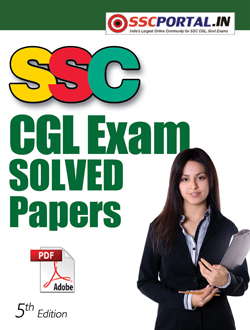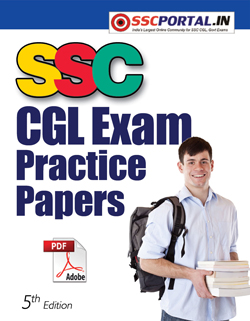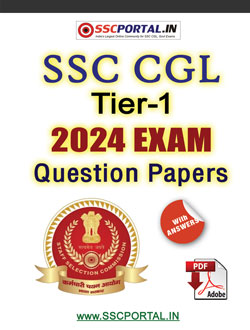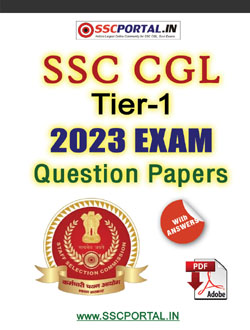NEW! SSC CGL PDF NOTES
SSC CGL MCQ : Biology
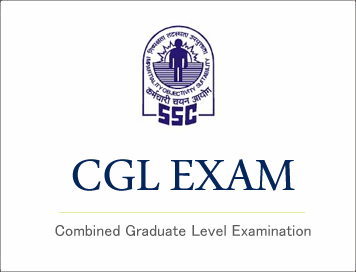
SSC CGL MCQ : Biology
1. Silviculture is the branch of botany in which we study about-
(a) Culture of algae
(b) Development of ofrest
(c) Culture of fungi
(d) Siliciphida plant
2. Study of pollen grain is called-
(a) Pomology
(b) Polynology
(c) Phocology
(d) Mycology
3. Study of internal structure of plant-
(a) Morphology
(b) Anatomy
(c) Cology
(d) Taxonomy
4. Estimatin of age of woody plant by counting annual ring is-
(a) Dendrology
(b) Denrochronolgy
(c) Agronomy
(d) Demography
5. Study of growing plant without soil in water containing nutrient is-
(a) Hydrotonics
(b) Hydrophonics
(c) Hypotonics
(d) None
6. In Exo-biology we study about-
(a) External structure of living beings
(b) Life present on the earth
(c) Life present in the other layer of earth atmosphere
(d) Life found in space and on other setallite.
7. Xenobiotics which are inherently resistant to microbial attack are called as-
(a) Biodegradable
(b) All of the given optins
(c) Recalcitrant
(d) Persistent
8. Curd is sour due to presence of
(a) Citric Acid
(b) Lactic Acid
(c) Acetic Acid
(d) None of these
9. EBOL is a –
(a) Virus
(b) Bacteria
(c) Protozoa
(d) Fungi
10. Virus that infect bacteria are called
(a) Bacteriophages
(b) Basophils
(c) Basal body
(d) Basidiospores
11. Desease caused by HIV-
(a) Tuberculosis
(b) Cancer
(c) Acquired immune deficiency syndrome
(d) None of these
12. The biggest single- celled organism is
(a) Yeast
(b) Acetabularia
(c) Acetobacter
(d) Amoeba
13. Agar – Agar is obtained from –
(a) Fungi
(b) Algae
(c) Moss
(d) Bacteria
14. Red rot of sugarcane is caused by
(a) Colletotrichum falcatum
(b) Cercospora percoruata
(c) Alternaria alternate
(d) Phylophthora infestans
15. Aflatoxins are produced by –
(a) Fungi
(b) Bacteria
(c) Algae
(d) Viruses
16. Statements:
- In Gymnosperms, seeds are enclosing in side fruits.
- Dicots and monocots are included in Angiospersm.
(a) Both Statements 1 and 2 are correct.
(b) Both Statements 1 and 2 are incorrect.
(c) Statement 1 is correct, but Statement 2 is incorrect.
(d) Statement 1 is incorrect, but Statement 2 is correct.
17. Which part of the cinchona yields a drug?
(a) Endosperm
(b) Pericarp
(c) Bark
(d) leaf
18. Fiber of cotton is obtain from–
(a) Stem
(b) Seed
(c) Fruit
(d) Root
19. An enzyme produced by HIV that allows the integration of HIV DNA into the host cell’s DNA is -
(a) Integrase
(b) Ligase
(c) Helicase
(d) DNA gyrase
20. Dr. Norman E. Borlaug belonged to-
(a) Spain
(b) Mexico
(c) America
(d) Austria
21. Eye of potato are -
(a) Apical buds
(b) Axillary buds
(c) Adventitous root
(d) Extra axillary bud
22. Ginger is-
(a) Modified root
(b) Modified stem
(c) Modified leaf
(d) Modified bulb
23. Cactus is referred to as-
(a) Hydrophte
(b) Mesophte
(c) Xerophyte
(d) Epiphte
24. Agar – agar is prepared from
(a) Alage
(b) Lichens
(c) Fungi
(d) Bryophyte
25. The inflorescence of wheat is-
(a) Raceme
(b) Catkin
(c) Spike
(d) Panicle
26. Consider the following statements:
(1) Maize can be used for the production of starch
(2) Oil extracted from miaze can be a feedstock fro biodiesel
(3) Alcoholic beverages can be produced by using maise.
Which of the statements given above is/ are correct?
(a) 1 only
(b) 1 and 2 only
(c) 2 and 3 only
(d) 1, 2, and 3
27. Double fertilization is main feature of-
(a) Bryophtes
(b) Pteridophytes
(c) Gymnosperm
(d) Angiosperm
28. Parthenogenesis is a process in which-
(a) Fruit develop without harmone
(b) Fruit develop without fertilization
(c) Development of egg without fertilization
(d) Development of embryo without fertilization
29. A fertilized egg is known as-
(a) Oospore
(b) Conidiospre
(c) Zoospore
(d) Zygote
30. Lungs of a plant are-
(a) Leaves
(b) Stems
(c) Flowers
(d) Roots
31. The plant from which cocoa and chocolate are obtained is–
(a) Herb
(b) shrub
(c) Small tree
(d) very big tree
32. Crop shown at the commencement of the monsoon is called-
(a) Rabi crop
(b) Cash crop
(c) Kharif crop
(d) none of these
33. Plant which grow in saline soil are-
(a) Xerophytes
(b) Hydrophytes
(c) Halophytes
(d) Succulents
34. Transpiration in plants is a process of
(a) Photorespiration
(b) Water loss
(c) Food production
(d) Respiration
35. In soil, water that is readily available to plant roots is:
(a) Gravitational water
(b) Capillary water
(c) Hygroscopic water
(d) Bound water
36. Vaseline was applied to both surfaces of the leaves of aplant. Which of the following process/processes would be affected?
- Photosynthesis
- Rspiration
- Transpiration Select the correct
answer using the code given below:
(a) 1 and 3 only
(b) 2 only
(c) 2 and 3 only
(d) 1, 2 and 3
37. Willting of plants occurs due to excessive:
(a) Absorption
(b) Transpiration
(c) Respiration
(d) Guttation
38. The loss of water in the form of water drops is called-
(a) Transpiration
(b) Respiration
(c) Guttation
(d) Exosmosis
39. Transpiration differs from evopartion in-
(a) Rate of water loss
(b) Transpiration is a physiological process while evaporation is physical process.
(c) Transpiration is physical process while evaporation is a physiological process.
(d) Frequency of water loss.
40. Dwarf plants can be made taller by applying-
(a) Gibberellins
(b) Auxins
(c) Cytokinins
(d) Dormin
41. The oxygen in photsythesis is released from-
(a) CO2
(b) H2O
(c) Both CO2 & H2O
(d) Chlorophyll
42. Photolysis of water involves-
(a) Excitement of water
(b) Evoluation of oxygen
(c) Breakdown of water by light
(d) Splitting of water into its ion H+ and OH
43. An element present in chlorophyll –
(a) Ca
(b) Fe
(c) Mg
(d) S
44. Respiration is-
(a) Endothermic process
(b) Exothermic process
(c) Anabolic process
(d) Endagenic process
45. Fermentation is –
(a) Anearobic respiration
(b) Incomplete oxidation of carbohydrate
(c) Complete oxidation carbohydrate
(d) None of above
46. Incomplete break down of sugar in anaerobic respiration form –
(a) Fructose and water
(b) Glucose and CO2
(c) Alcohol and CO2
(d) Water and CO2
47. Respiration is –
(a) Catabolic process that uses carbon dioxide, produce oxygen and converted released energy to ATP
(b) Anabolic process that uses oxygen and carbon dioxide to form ATP
(c) Anabolic process that uses oxygen, piduces carbon dioxide and converts released energy into ATP
(d) Catabolic process that uses oxygen produces carbon dioxide and converts released energy into ATP
48. Harmone helping in cell division-
(a) IAA
(b) NAA
(c) Cytokinn / Seatin
(d) Cibberellin
49. The instrument by which rate of growth of plant is measured-
(a) Hydrometer
(b) Auxanometer
(c) Osmometer
(d) Potometer
50. For the growth in length of plant which of the following is not essential-
(a) Sodium
(b) Calcium
(c) Nitrogen
(d) Phosphorus


